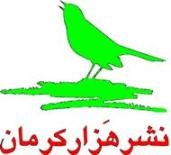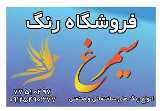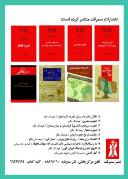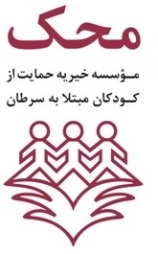خبر
Christian Assyrians in Iran
- خبر
- نمایش از سه شنبه, 13 آبان 1393 12:44
- بازدید: 3752

resource: Magazine events (www.events.ir); No 2 September 2003
Dr W Piroyan, Professor at Islamic Azad University
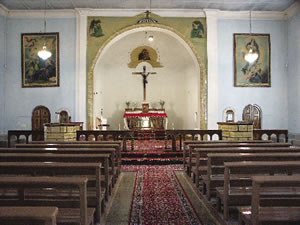
The Assyrian Empire, once the mightiest of the world was brought down in the 7th century BC, by the Babylonians and the various peoples that inhabited the eastern slopes of the Zagros Mountains. One hundred years later the entire land of the Assyrians was captured by the great Achaemenid Empire (700- 330 BC) at the hands of Cyrus.
Henceforth Assyrians became a significant element in the formation of a great civilization to the east of Zagros range, the Iranian civilization. As for Christianity, this religion has a long history in Iran, since the very early days of its emergence. In the second chapter of the Book of the Acts from the ninth verse onwards, this fact is clearly pointed out. Christianity arrived in Iran through Antioch, which was the capital of the Seleucid Dynasty,
and rapidly spread throughout the land.
During the reign of the Seleucids the territories to the west of the Euphrates, extending to the Mediterranean, were called Assyria Minor or Syria and the territories east of Euphrates were known as Assyria Major. And because the main center of Christianity was then Antioch and it was situated in Assyria Minor or Syria, the non-Greek Church became known as Suri or Soryani from “Syria”.
On the northeast of the Euphrates, in the years 132-1 BC a small state was established as a Greek protectorate by an Assyrian named Urya. It came to be known as the Khassroon country with Alreha – Odessa
to the Greeks – as its capital. It occupies a special place in the history of Christianity and Islam. Christianity was born at a time that had remarkable characteristics:
1. The Roman Empire, which was based on slavery as the driving power of its economy, ruled mercilessly over vast areas of the world with many divers peoples
2. Philosophy, the Athenian School of thinking, and the Alexandrian School, as well as almost 100 different cults and religions, known together as the Gnosis, where at their Zenith of glory and of great interest to the entire society.
Mottos of equality, fraternity and justice, as the ideals of Christian thinking, attracted the oppressed and frustrated people who could no longer bear the cruelties of the Roman emperors. Iranian Christianity and its
characteristics Early in the history of Christianity the major centers of this religion were Rome and Antioch. Then the Alexandrian Church became the third major center. Later, for sentimental reasons, Jerusalem became
the fourth, as the symbol of the origin of Christianity. Later still Constantinople became the fifth (451 AD).
Alexandria was the border between the East and the West, that is to say all the Churches to the west of
Alexandria became known as the Western Churches, and the churches that were east of Alexandria, as the Eastern Churches. The highest bishop of each of those churches came to be known as the Patriarch.
Eventually, however, Eastern Christianity was divided into three major churches or branches:
1. The Orthodox Church
2. The Diophysite Church, also known as the Eastern Church, and
3. The Monophysite, or Jacobin Church.
The Orthodox Church adopted the Greek language, but the other two adopted Assyrian. In 457, Bar-Sauma, an extremist follower of the Diophysite School and the head of Alreha University, who was under great pressure from the opponents, left this city to settle in Nasibein where, in 485, he became the bishop. Soon after, Firooze, the Iranian Sassanid king, noticed him as a remarkable person and granted him the authority of defending that border town against all enemies. He cleared his church from the Orthodox Christians and made it uniformly
adherent of the Diophysite School. Henceforth serious conflict and competition broke out between the Eastern Church and the Orthodox Church and there were heated arguments on social, religious and scientific issues.
The Eastern Church managed to overcome the Orthodox Church despite being itself denied any patronage while the Orthodox Christians had the protection of the Roman Empire. During the reign of the Moslem Bani Abbas Dynasty in Baghdad, in 762, the Patriarchal center of the Eastern Church was transferred to Baghdad with authority over all the Christians of the Islamic Empire. Each of the 21 metropolitans that had a bishop were obliged to submit a report, every four years, of the conditions and the state of the relevant region and its
Christians.
In the years that followed the invasion of Iran and Bani Abbas territories by Teymour Lang (the Lame) the Eastern Church suffered severely and its cultural, social and academic activities were badly disrupted. But the followers of this Church took refuge in the Zagros Mountains, in the plains north of Mesopotamia and in northwestern Iran where they managed to survive, despite many hardships, down to the 19th century.
The persistent source of threat to the Eastern Church and a cause for its weakness was the Orthodox Church, which had gained much knowledge about the Christians living in the Ottoman and Persian Empires, and in 1830 sent two missionaries to the region: Harrison Gray Otis Dweight, and Eli Smith. They reached northwestern Iran where they spent some time gathering information about the conditions of the Christians. In 1834 the
priest Justine Perkins and his wife arrived in Tabriz where they were joined by Dr Asahil Grant and his wife, in 1835.
Perkins received a permit from Mohammad Shah of Qajar Dynasty, in 1840, according to which be could officially engage in missionary activities under the supervision of the Governor of Azerbaijan. Before then, in
1836, he had set up the first boys’ school in Urumieh and in 1838 his wife had established the first girls’ school. Soon after, a printing house was created and a magazine by the name of Shoa-e-Noor (the Ray of Light)
began to be published. By 1896 there were already 117 schools in Urumieh and the surrounding villages. At the same time the first medical school for boys and nursing school for girls were also established. The influence
of the American Presbyterian Church in the Eastern Church, which was by now known as the Assyrian Church of the East, was so immense that many of the followers of the latter joined the Protestant Church and thus the Eastern Church was further weakened.
Consequently, European Catholics became concerned and, to seek a remedy, the French Foreign Office sent a
young priest, named Eugene Bourre, to investigate the situation, and to reestablish diplomatic relations with Iran. Bourre could speak Persian, Arabic, Turkish and Assyrian. Ultimately Bourre obtained a decree from Mohammad Shah which ordered the Shah’s brother, Qahreman Mirza, the Governor of Azerbaijan, to allow and help Bourre to establish the first higher education school in Tabriz, which he did in 1839. The school was so highly appreciated by the local population that Bourre set up five schools in the villages that were inhabited by
Assyrian Christians and a higher education school where students were taught to become West Orthodox priests. The school was positioned near present day city of Salmass.
The moves made by the Americans and the French induced the Anglican Church in Canterbury as well as the
East Orthodox Church, the Lutheran and Baptist Churches of Germany and Sweden and a few other sects of Christianity, to come to Iran for their shares! They established printing houses, published books and
magazines and built schools and churches, thus breaking up the Assyrian church of the East into 100 pieces. (American and British missionaries even managed to convert a number of non-Christians.) Soon, another
periodical appeared, called “Urumieh Orthodox”, which was the last straw: the Assyrians, who were by now infuriated, published their own periodical called “setarh” (Star), as an effort towards protecting their identity
and traditions.
Today, Iranian Christians consist of three main groups:
1.Iranian Christians whose mother tongue is Armenian
2. Iranian Christians whose mother tongue is Assyrian, and
3. Iranian Christians whose mother tongue is Persian.
Of these three groups the first, the group generally known as Armani by Iranians, is the largest. Armenians were transferred by Safavid kings from Armenia to northwestern Iran and to Isfahan because they were generally skilled craftsmen, and from these two centers they gradually moved to other parts of Iran.
Assyrians in present day Iran The churches and sects of Assyrian Christianity are:
1) The Assyrian Church of the East or the Pars Church which is exclusive to Iranian Assyrian Christians,
2) the West Orthodox Church (Roman Church) which is mostly made up of Assyrianspeaking Iranians and is also known as Assyro Caledonian Catholic Church,
3) Presbyterian Protestant Church, and
4) the Pentecost or Brothers in Christ Church.
The majority of Iran’s Christian Assyrians live at present in the city of Urumieh and in Tehran province and
small numbers can be found in the cities of Hamedan and Kermanshah, and in Khuzistan, Fars, Khorassan and Isfahan provinces. Close to or within Urumieh there are about 300 Assyrian Churches of various sizes some of which are now abandoned because of the small number of Assyrians that remain in Iran.
Assyrians also have local gatherings/societies in Tehran, Urumieh, Isfahan, Ahwaz and a few other cities. They also have educational, sports and cultural clubs, publications and charities.
Almost 50% of the present 30,000 Iranian Assyrians belong to the Assyrian churches of the east and 50% to the others. Assyrians also have a parliamentary representative in the Majlis, and an office, called Assyrian Universal Alliance Asian Chapter, in Tehran. All Assyrians of Iran are literate and bilingual; 80% speak three or four language. For every 1,800 Assyrian one is a university teacher; for every 195, one is a medical doctor;
for every 200 one is a university student; for every 3,000 one is in the armed forces; for every 400 one is a poet; and for every 900 one is an engineer.


